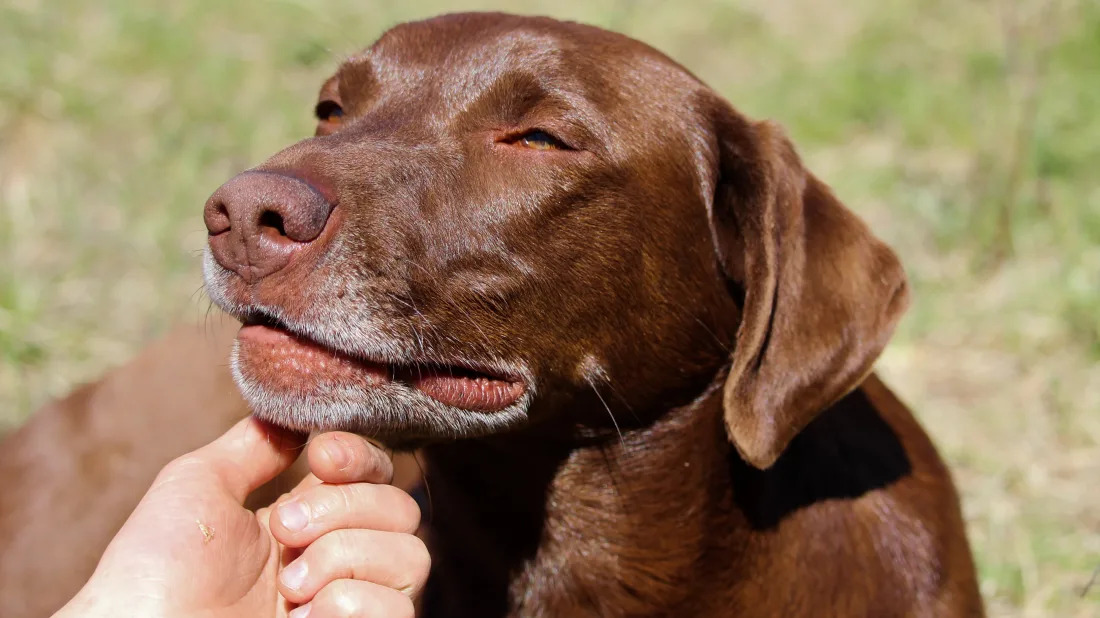
A little instruction folks and it does apply to meeting a new dog. this happens often enough, particularly is you own a dog. otherwise you fumble your way in.
this makes it all that much easier.
recall that some guard dogs are literally trained to grab an outstreatched hand and hold you. Caution is just good sense until you have been properly introduced..
The Right Way to Pet a Dog, According to Veterinarians
Yes, that German shepherd is adorable, but there’s a specific protocol you should follow when approaching dogs you haven’t met before.Mental FlossEmily Petsko
https://getpocket.com/explore/item/the-right-way-to-pet-a-dog-according-to-veterinarians
Photo from iStock / Akchamczuk.
After reading that above headline, you may have thought to yourself, “There’s no right or wrong way to pet a dog. I’ve had dogs my whole life!” It’s true that canines tend to be less persnickety than cats when it comes to human affection, but veterinarians stress that there’s still some etiquette you should follow when petting a dog. This is especially true if it’s a dog you don’t know.
Much like humans, dogs are complex creatures with a wide range of personalities, so it helps to know the basics of dog psychology and body language before approaching that adorable golden retriever in the park. The best way to initiate contact with a dog (after getting the owner’s permission, of course) is to reach out and let the dog sniff your hand.
“Dogs live through their olfactory sense much more than their visual one,” Dr. Uri Burstyn, a veterinarian from Vancouver who also educates pet owners on YouTube, tells Mental Floss. Be sure to keep your hands curled, as if you were chopping vegetables, just in case the dog feels threatened and lunges to bite your fingers.
If the dog seems pretty comfortable and doesn’t recoil from your hand, the best place to pet a dog is under the chin. The one thing you should never do is immediately start patting the dog’s head. This can be seen as a dominant, aggressive gesture because dogs generally keep their nose to the ground. If a dog feels something touching the top of his head, he might think it’s a bigger dog attacking him and react in a defensive manner. “There’s an old joke that dogs can’t look up," Dr. Burstyn says. "They can, but hardly ever do.”
Ohio-based veterinary behaviorist Meghan Herron also cautions against touching a strange dog’s belly because it’s such a vulnerable area. In some cases, a dog might reveal his tummy to show that he’s feeling intimidated, and to convey that he’s not a threat. People tend to think this means the dog wants his belly scratched, but that isn’t always the case.
Of course, many dogs are comfortable with these types of interactions—even with strangers—because they’re used to being around people. However, Herron suggests erring on the side of caution. “What I recommend is just to assume they’re not [socialized] and pet them in a way that’s as least threatening as possible,” Herron tells Mental Floss. “Let it be the dog’s choice.”
Aside from these precautions, Burstyn and Herron recommend avoiding sensitive areas, like a dog’s paws or rump. Once you’re on good terms with a dog, try petting areas that are generally considered “good spots,” like the lower back and chest. This will vary depending on the dog, so pay attention to the subtle body cues they're sending you. A wagging tail just means a dog is ready to interact, which could mean that the dog is ready to bite. Instead, look for a dog with a wildly waving "helicopter tail" whose body is wiggly and loose, rather than stiff and rigid, Herron says. These are signs that a dog is happy and comfortable.
Do you have a kitty at home, too? Check out Burstyn’s advice for the right way to hold a cat, or visit his YouTube page for more pet tips.
No comments:
Post a Comment